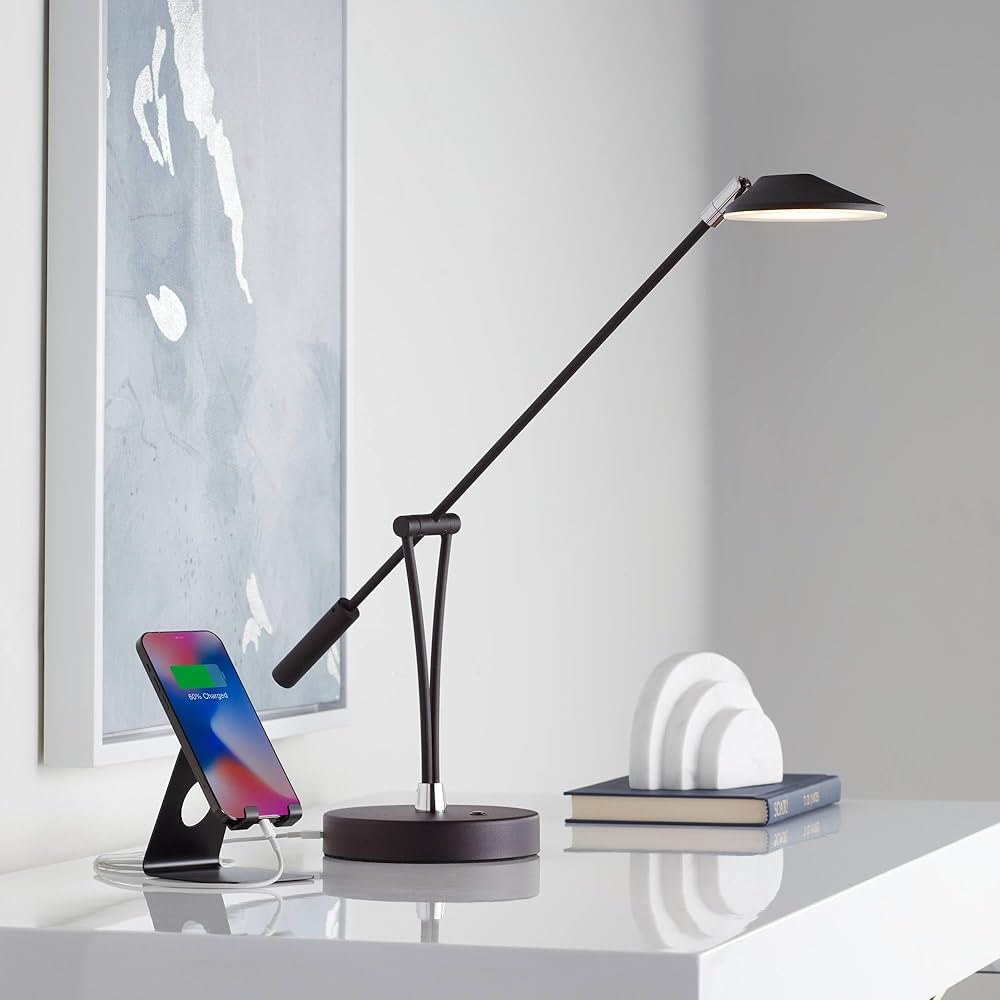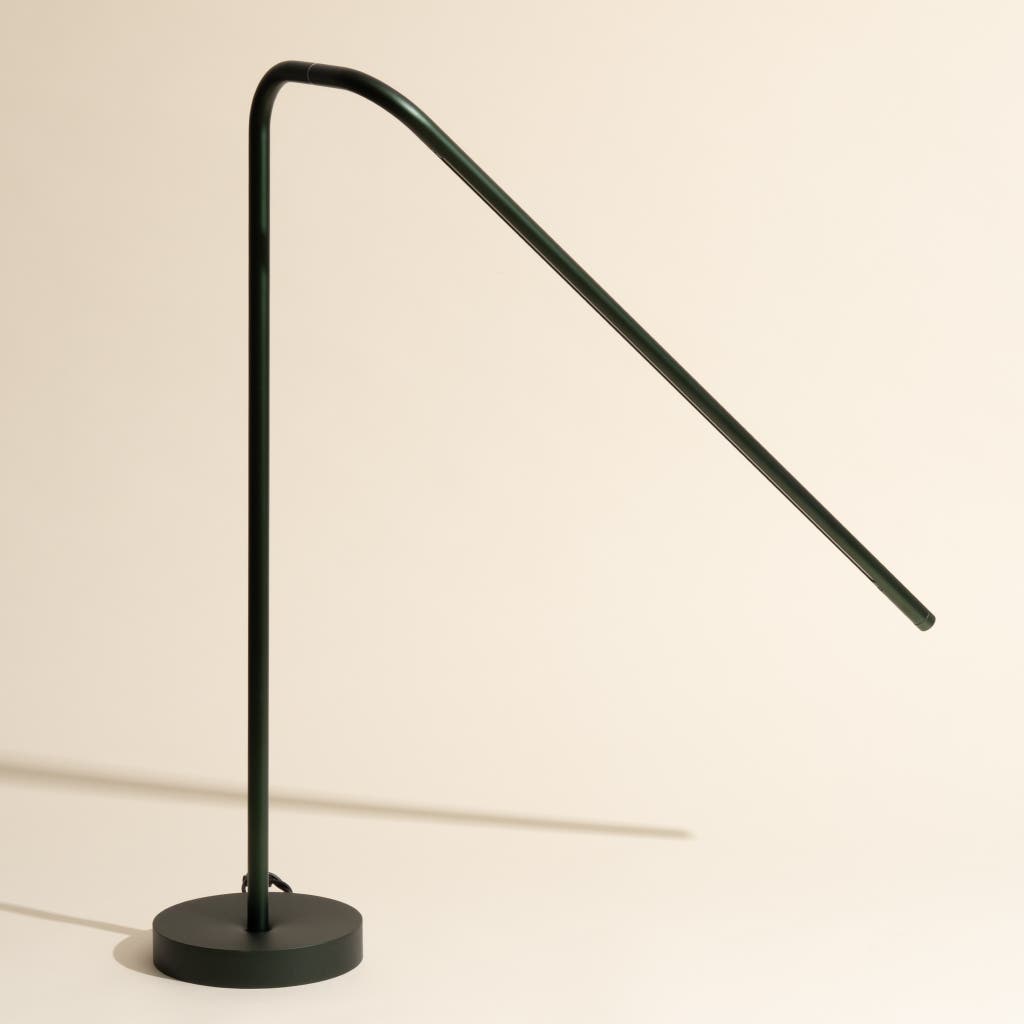Have you ever wondered if your desk lamp is set at the right height? The way your lamp lights up your workspace can make a big difference in how comfortable and productive you feel.
Too low, and you might get annoying shadows. Too high, and the light might be too harsh or miss the spot you need. Finding the perfect height isn’t just about guessing—it’s about creating a space where your eyes stay fresh, and your focus stays sharp.
Keep reading to discover exactly how high your desk lamp should be to transform your work area and boost your efficiency.
Ideal Desk Lamp Height
Finding the ideal height for your desk lamp can change how comfortable and productive your workspace feels. Too low, and shadows might disrupt your work; too high, and you may lose the focused light you need. Let’s break down what works best for most setups and what you should consider before adjusting your lamp height.
Standard Height Range
The typical desk lamp height usually falls between 12 to 18 inchesabove the desk surface. This range offers enough clearance to light your workspace evenly without causing glare in your eyes.
For most people, positioning the lamp so the light source sits just above eye level when seated helps reduce eye strain. This setup creates a comfortable balance, illuminating your work without harsh shadows.
Factors Influencing Height
Your ideal lamp height depends on several personal and environmental factors. Consider the size and depth of your desk first; a deeper desk might require a taller lamp or an adjustable arm to reach the back areas effectively.
Think about the type of work you do. Detailed tasks like drawing or reading small print benefit from a lamp placed closer to the surface. Meanwhile, general computer work might need softer, more diffused light from a slightly higher position.
Also, the lamp’s design matters. Flexible lamps with adjustable arms give you more control, letting you change the height as needed. Do you prefer a fixed lamp or one that adapts to different tasks?
Lighting Angles And Coverage
Lighting angles and coverage are crucial factors when positioning your desk lamp. How your lamp directs light affects not only visibility but also comfort and productivity. Understanding the right angles helps you avoid eye strain and creates a workspace where every detail is clear.
Optimal Light Direction
Direct your desk lamp light so it illuminates your work area without shining in your eyes. Aim the lamp head at about a 45-degree angle toward your task. This angle provides enough brightness without overwhelming your vision.
If you’re right-handed, position the lamp on your left side to prevent your hand from casting shadows on your work. Left-handed people should do the opposite. This simple adjustment can make a big difference in how well you see your work.
Avoiding Shadows And Glare
Shadows and glare cause discomfort and reduce focus. To minimize shadows, adjust the lamp height so the light spreads evenly across your desk. Too low, and shadows become harsh; too high, and the light may lose intensity.
Glare occurs when light reflects off shiny surfaces or directly into your eyes. Use lamps with adjustable brightness or diffusers to soften the light. Have you noticed how a small change in lamp position can suddenly improve your entire workspace?
Desk Lamp Types And Height
Choosing the right desk lamp height is crucial for effective lighting. The lamp height impacts how well it illuminates your workspace. Different types of desk lamps offer various height options. Understanding these types helps you find the perfect fit for your needs.
Adjustable Lamps
Adjustable lamps are versatile and practical. They allow you to change the height easily. This feature is ideal for tasks needing different light levels. Some models come with flexible arms. Others have rotating heads for more light control. You can adjust them to suit any task or mood. Perfect for shared workspaces where users have different preferences.
Fixed Height Lamps
Fixed height lamps offer simplicity and stability. They provide consistent lighting without adjustments. These lamps are often more affordable. They suit those who prefer a no-fuss lighting solution. The height is predetermined, usually ideal for general desk use. It’s a reliable choice for basic lighting needs in home offices.

Credit: www.nytimes.com
Task-specific Lighting Needs
Task-specific lighting is essential for comfort and efficiency. Different activities need different light heights and intensities. A desk lamp should adapt to the task at hand. Proper lighting reduces eye strain and improves focus.
Reading And Writing
Reading and writing need soft, even light. The lamp should be about 15 to 20 inches above the desk. This height prevents glare and shadows on the paper or book. Position the lamp so light shines directly on the page. Use a warm light bulb to reduce eye fatigue.
Computer Work
For computer work, avoid direct light on the screen. A desk lamp should be higher, around 20 to 24 inches. This reduces screen glare and reflections. Aim the light at the desk surface, not the monitor. Choose a cool white light to keep you alert.
Crafting And Detailed Tasks
Crafting needs bright and focused light. The lamp should be close, about 12 to 16 inches above the work area. This height shows fine details clearly. Use adjustable lamps to move light as needed. Bright, daylight bulbs work best for color accuracy and precision.
Ergonomics And Eye Comfort
Ergonomics and eye comfort play a big role in setting the right height for a desk lamp. A lamp placed at the correct height helps reduce tired eyes and keeps you comfortable during work or study. Good lighting supports focus and prevents headaches caused by poor visibility.
Reducing Eye Strain
Eye strain happens when your eyes work too hard to see in poor light. A desk lamp should be high enough to spread light evenly across your workspace. This stops harsh shadows and glare from disturbing your vision. Position the lamp so the light falls directly on your task, not into your eyes.
Adjust the lamp height to avoid flickering or bright spots. These can cause your eyes to feel tired quickly. Proper placement helps your eyes relax and stay fresh for longer periods.
Proper Light Intensity
Light intensity matters as much as lamp height. Too bright light can cause discomfort and headaches. Too dim light forces your eyes to strain. Aim for soft, even light that matches your task’s needs.
Use a lamp with adjustable brightness or a dimmer switch. This lets you control the light based on time of day or activity. Keep the lamp about 15 to 30 inches above the desk surface for best results.

Credit: www.amazon.ca
Placement Tips For Desk Lamps
Getting the placement of your desk lamp right can change how comfortably and effectively you work. The lamp’s height and position affect not just visibility but also eye strain and workspace organization. Let’s dive into some practical tips on where to place your desk lamp for the best results.
Positioning Relative To Dominant Hand
Think about which hand you use most when writing or typing. If you’re right-handed, place the lamp on the left side of your desk. This setup prevents your hand from casting shadows over your work area.
Left-handers should do the opposite—set the lamp on the right side. This simple adjustment helps keep your workspace well-lit without dark spots where you need to focus. Have you noticed how shadows can sneak up unnoticed until they start making your eyes tired?
Desk Layout Considerations
Look at the shape and size of your desk before positioning your lamp. A corner desk might benefit from a lamp placed in the corner, giving light across both work surfaces. If your desk is cluttered, consider a lamp with an adjustable arm to direct light exactly where you need it.
Also, think about other light sources in your room. Avoid placing the lamp where it causes glare on your computer screen or reflects off shiny surfaces. Have you ever adjusted your lamp only to realize the glare made things worse?
Common Mistakes In Lamp Height
Getting the height of your desk lamp wrong can seriously affect your workspace comfort and productivity. Many people overlook how crucial lamp height is, leading to eye strain or poor lighting. Recognizing common mistakes helps you avoid these issues and create a better environment for work or study.
Too High Or Too Low
Placing your lamp too high spreads light unevenly and causes shadows on your work surface. Too low, and the light becomes too focused or glaring, making it hard to see clearly. I once set my lamp too low and ended up squinting for hours—adjusting the height made a huge difference instantly.
Try to position the lamp so the light hits your workspace without shining directly into your eyes. Is your light casting shadows where you write or type? Adjusting the height can solve that quickly.
Ignoring Adjustable Features
Many desk lamps come with adjustable arms or heads, but some people ignore these features and leave the lamp fixed. This limits your ability to control light direction and intensity. I had a lamp with a flexible arm but rarely used it until I noticed how much easier it was to reduce glare and brighten specific spots.
Don’t miss out on the benefits of adjustability. Move the lamp throughout the day if needed. Your eyes and tasks change, so your lamp setup should too.

Credit: www.nytimes.com
Choosing The Right Desk Lamp
Choosing the right desk lamp impacts your comfort and productivity. The correct lamp reduces eye strain and improves focus. It also complements your workspace style. Consider your needs and desk setup before buying. Some lamps suit reading, others fit computer work. The height and adjustability matter for proper light placement.
Features To Look For
- Adjustable height and angle for flexible lighting
- Brightness control to match different tasks
- Energy-efficient LED bulbs for long use
- Stable base to prevent tipping over
- Compact design for small desks
- Color temperature options for warm or cool light
Budget Vs Quality
A low-cost lamp may lack durability and features. High-quality lamps last longer and offer better light control. Spend a bit more for adjustable arms and dimmers. Choose a lamp that fits your budget but meets your needs. Cheap lamps might cause eye strain or break easily. Investing in quality saves money and hassle over time.
Frequently Asked Questions
How High Should A Desk Lamp Be Positioned?
A desk lamp should be 15 to 30 inches above the desk surface. This height reduces glare and shadows, providing optimal task lighting for reading and writing.
Why Is Desk Lamp Height Important For Eye Comfort?
Proper desk lamp height prevents eye strain by ensuring even light distribution. It avoids harsh brightness and shadows, making your workspace comfortable and reducing fatigue.
Can Desk Lamp Height Affect Workspace Productivity?
Yes, correct desk lamp height improves focus by providing clear, glare-free lighting. Well-lit workspaces boost concentration and reduce mistakes, enhancing productivity.
Should Desk Lamp Height Change For Different Tasks?
Adjust desk lamp height based on task needs. For detailed work, lower the lamp closer; for general lighting, keep it higher for broader coverage.
Conclusion
Finding the right height for a desk lamp is key for good lighting. The lamp should shine light evenly without causing glare. Keep it high enough to cover your workspace but low enough to avoid shadows. Adjust the height based on your desk size and chair position.
Proper lighting helps reduce eye strain and improves focus. Simple changes can make a big difference in comfort and productivity. Try different heights until you find what feels best for you. Good lighting supports better work and happier eyes.





